

Why is magnesium oxide getting more and more popular? Hear what senior researchers have to say
2022-10-28
Magnesium oxide (MgO) is a white fine ceramic powder, in addition to self-sintering to make MgO ceramics, can also be synthesized, compounded with other compounds or used as additives to make high-performance ceramics or crystals. Typical application scenarios for MgO are as follows
(1) Typical application as the main ingredient
(1) MgO transparent ceramics
MgO transparent ceramic (specification: CGC-1) has the advantages of low density, high temperature resistance, high insulation, excellent mechanical properties, high infrared transmittance, good chemical stability and low emissivity, and is a high-performance infrared window and sensor protection material [1].
(2) MgAl2O4 transparent ceramics
MgAl2O4 transparent ceramics have excellent optical transmittance covering the ultraviolet to infrared region (190nm<λ<6000nm), and also have the advantages of high hardness, high strength, high temperature resistance, low emissivity, sand erosion and rain erosion resistance and impact resistance, and have been widely used in transparent armor, missile windows and fairings [2]. MgAl2O4 is formed by the reaction of MgO (specification: GFS-1) and Al2O3 according to the stoichiometry ratio of 1:1, and the mass ratio of MgO is 28.2%.
(3) Co2+ doped with MgAl2O4 crystals
Co2+ doped magnesium-aluminum spinel (Co:MgAl2O4) crystal is an effective material for passive Q-switched solid-state lasers working in the near-infrared region, and the high peak power pulsed laser generated by its passive Q-switching action has the characteristics of small eye damage, strong penetrating ability, small transmission loss and strong photoelectric countermeasure ability, and can be widely used in space optical communication, battlefield rapid ranging and unmanned equipment lidar and other fields [3]. The mass ratio of 99.995% high-purity MgO (specification: CGC-1) in Co2+ doped MgAl2O4 crystals is similar to that of MgAl2O4 transparent ceramics.
(4) MgO-Y2O3 complex phase ceramics
Using the "nailing effect" between MgO (specification: GFS-1) and nano Y2O3 to mutually inhibit grain growth, MgO-Y2O3 complex ceramics with mechanical properties higher than single-phase and optical transmittance not inferior to single-phase can be prepared, which can be used to manufacture transparent armor, missile hoods, high-temperature observation windows and aviation windows [4]. In MgO-Y2O3 complex phase ceramics, the volume ratio of MgO to Y2O3 is usually 1:1, which is converted into mass MgO accounting for about 41.7%.
(5) MgO series microwave dielectric ceramics
With the update and iteration of mobile communication and satellite communication technology, people's requirements for communication time band are getting higher and higher, making low-medium and high-Q ceramics a research hotspot. On the one hand, MgO ceramics themselves have superior dielectric properties (εr=9.1, tanδ<1.6×10-6), which is an ideal microwave dielectric substrate material for 5G communication [5]. On the other hand, MgO-TiO2 series (mainly MgTiO3) microwave dielectric ceramics have important application prospects in electronic components such as resonators and filters due to their excellent dielectric properties [6]. MgTiO3 is composed of MgO (specification: GFS-2) and TiO2 according to the stoichiometry ratio of 1:1, and the mass of MgO accounts for 33.3%.
(2) Typical application as an additive
(1) As a sintering additive for high-performance ceramic heat dissipation substrates
With the development of high-power electronic devices in the fields of high-speed rail, aerospace and military industry in the direction of high temperature, high frequency and high integration, efficient heat dissipation has become an urgent need. High-power devices realize heat exchange with the outside world through ceramic copper clad laminates. At present, the mainstream ceramic substrates are Si3N4, AlN and Al2O3, all of which need to use MgO (specification: GFS-1) as a sintering auxiliary. Especially for Si3N4 ceramics with excellent comprehensive performance, in order to avoid the lattice defects caused by Al2O3 as an additive and increase phonon scattering, MgO (specification: GFS-1) has become the preferred sintering additive for the preparation of high thermal conductivity Si3N4 ceramics, and its dosage is about 3%.
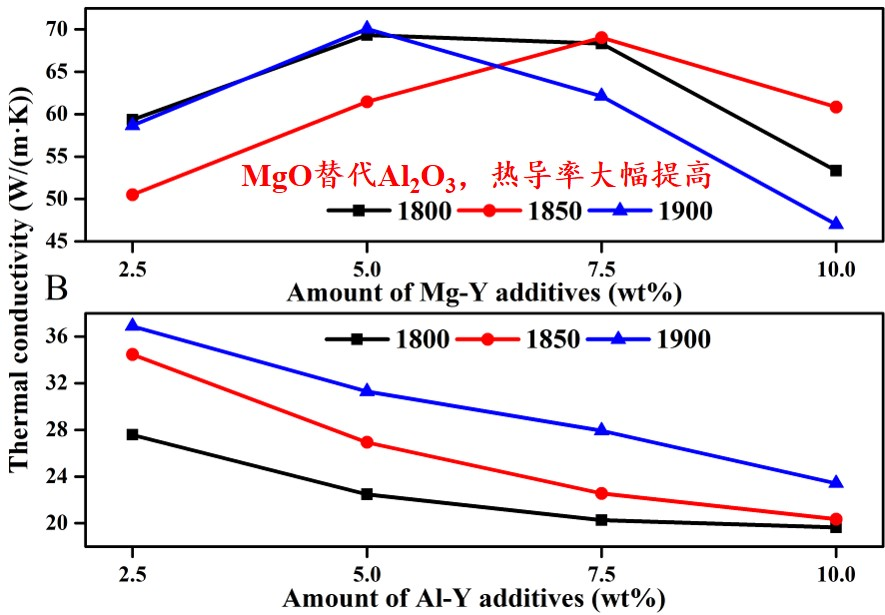
Fig. 1 Comparison of thermal conductivity of silicon nitride ceramics with MgO-Y2O3 and Al2O3-Y2O3 as sintering additives
(2) As a sintering additive for transparent ceramics such as Al2O3, YAG and AlON
Transparent ceramics such as Al2O3, YAG and AlON have good mechanical properties, chemical stability and excellent optical transmission, and are widely used in lighting, optical and medical instruments, armor and infrared detection and many other fields. MgO (specification: GFS-1) as an additive can significantly reduce the temperature of the solid-phase reaction, drag the grain boundary migration rate, discharge the pores, and promote densification. The grain boundary migration is inhibited by the nailing effect, the abnormal grain growth is avoided, and the mechanical properties are optimized. The amount of MgO added to such transparent ceramics is relatively low (<1%), but its dispersion is very important.
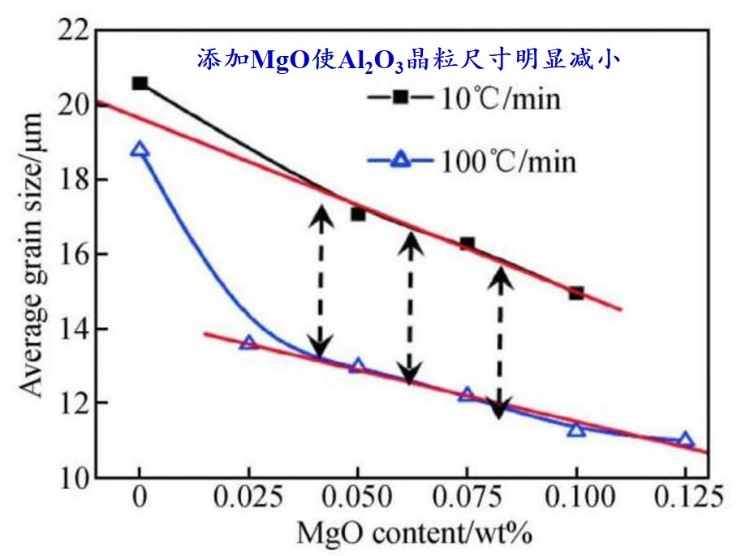
Fig.2 Variation of Al2O3 grain size with MgO addition[7]
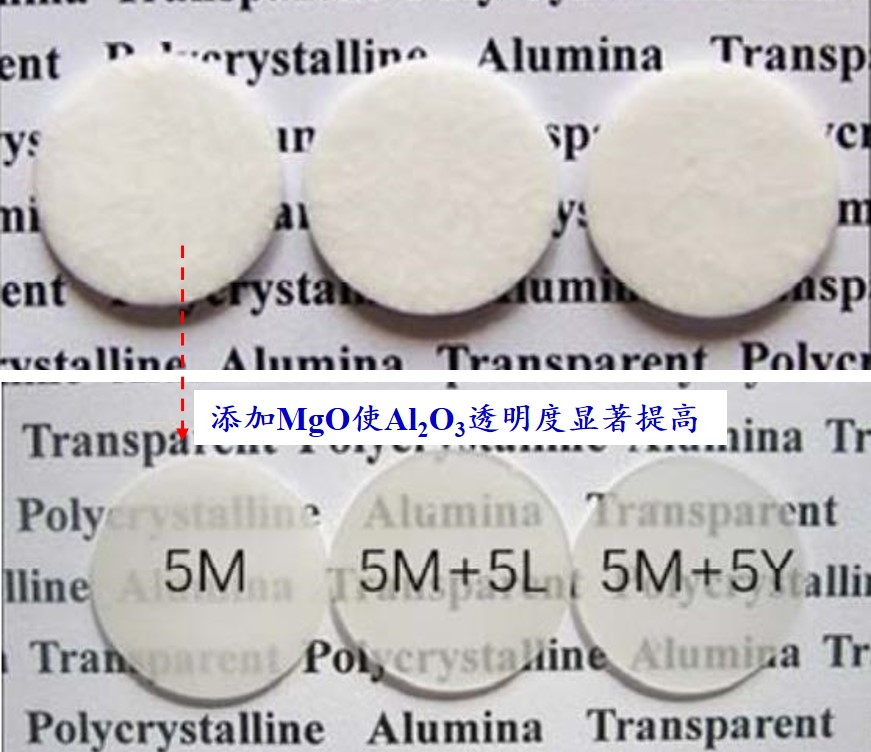
Fig.3 Visible light transmission of Al2O3 ceramics without and with MgO added[8]

图4 YAG光学透过率随MgO添加量的变化[9]

Fig. 5 Relationship between the optical transmittance of AlON and the addition of sintering additives such as MgO (specification: GFS-1)[10]
(3) As a sintering additive for ZTA wear-resistant ceramics
Both Al2O3 and ZrO2 have the characteristics of high temperature resistance, wear resistance and good biocompatibility. ZTA nano-complex ceramics prepared by ZrO2 toughened Al2O3 can exploit strengths and avoid weaknesses, give full play to its integration advantages, and have important applications in aerospace, engine wear-resistant parts and artificial femoral ball heads. The densification and grain refinement mechanism of MgO (specification: GFS-1) in ZTA ceramics is similar to that in Al2O3, and its use is about 2%.
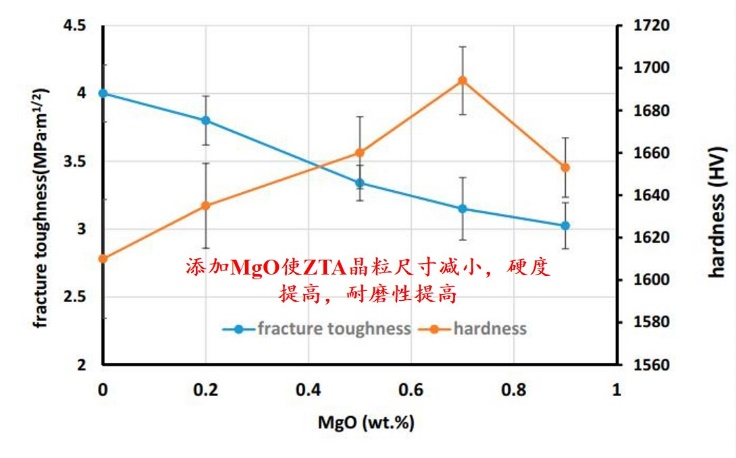
Fig.6 Variation of fracture toughness and Vickers hardness of ZTA ceramic with the addition of MgO (specification: GFS-1)[11]
(4) As a LiNbO3 crystal additive
Magnesium-doped lithium niobate (MgO:LiNbO3) crystals have unique advantages in NCPM frequency multiplication, mixing, and optical parametric oscillation (OPO) applications in lasers, and are widely used in optical parametric oscillation, optical parametric amplification (OPA), quasi-phase matching, and integrated optical waveguides [12]. The Curie temperature of LiNbO3 can be regulated by the incorporation of 99.995% high-purity MgO (specification: CGC-1), and its doping amount is usually less than 5mol%, which translates into a mass of about 1.4%.
The acquisition of high-performance ceramics is closely related to the properties of its starting materials and additives. Xiamen Golden Tungsten New Material Co., Ltd. applies unique purification process and granulation technology to produce high-purity ultra-fine and highly dispersed magnesium oxide GFS-1, GFS-2 has the following advantages:
(1) The purity is as high as 99.95% and 99.995%, and the sodium content is extremely low;
(2) Good dispersibility, easy to achieve uniform distribution in various types of ceramic matrix;
(3) Small particle size, uniform size distribution, high sintering activity; Good sphericity, good fluidity, easy to form.
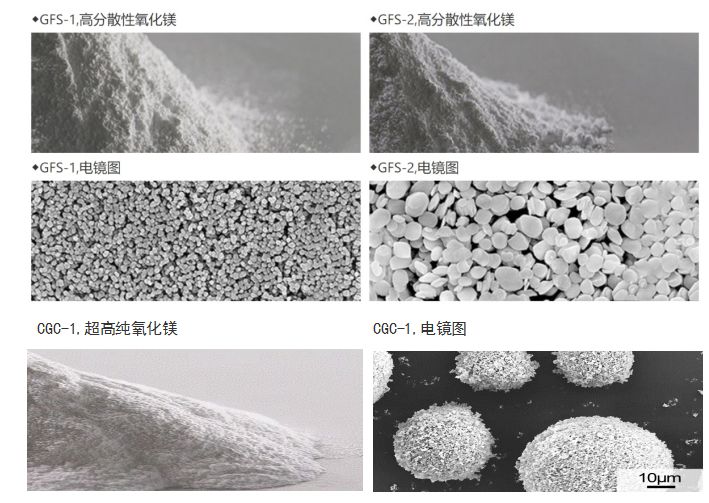
图6 高分散性氧化镁GFS-1, GFS-2,CGC-1光学及显微形貌
|
产品规格 |
GFS-1 |
GFS-2 |
CGC-1 |
|
粉体性能 |
|||
|
比表面积(m2/g) |
7.2 |
70.4 |
8.5 |
|
D50(µm) |
0.59 |
0.98 |
0.51 |
|
化学成分 |
|||
|
MgO (%) |
≥99.95 |
≥99.95 |
99.995% |
|
Cl (%) |
0.048 |
0.035 |
0.002 |
|
Al (ppm) |
10 |
5 |
3 |
|
B (ppm) |
1 |
1 |
1 |
|
Ca (ppm) |
19 |
4 |
2 |
|
Fe (ppm) |
9 |
4 |
1 |
|
Na (ppm) |
2 |
12 |
2 |
|
P (ppm) |
<1 |
<1 |
<0.5 |
|
S (ppm) |
<1 |
<1 |
<0.5 |
|
Si (ppm) |
9 |
7 |
5 |
As soon as GFS-1GFS-2 series of highly dispersible magnesium oxide was launched, it aroused a warm response in the market in the fields of thermally conductive ceramics, transparent ceramics and functional ceramics. Scientific research institutes, universities and related benchmarking enterprises that have used this product unanimously believe that various products prepared using GFS-1GFS-2 series of highly dispersible magnesium oxide meet or exceed expectations in terms of product performance and stability.
If you are interested in GFS-1GFS-2CGC-1 series high dispersion, high purity magnesium oxide related products, welcome to GFS-1GFS-2 series high dispersion magnesium oxide powder please contact Xiamen Golden Tungsten New Materials Co., Ltd. (website: www.xmjinwu.com) to get in touch.
Source:
[1] Zhou Jiafen et al., Effect of Y2O3 on the properties of sintered transparent MgO ceramics.
[2] Duan Jinxia et al., Research progress of magnesium aluminum spinel transparent ceramics.
[3] Geng Yanqiu et al., Preparation of Co:MgAl2O4 transparent ceramics for 1.5μm passive Q-switched saturable absorbers.
[4] Wei Yujing, SPS preparation of MgO-Y2O3 complex phase ceramics and their properties.
[5] Tan Zhenyu, Preparation and modification of LiF-doped magnesium oxide ceramic substrate for 5G communication systems.
[6] Jia Xibin, Structure and property optimization of MgO-TiO2 series microwave dielectric ceramics.
[7] Zhang Xiao, Effect of MgO on the optical properties of alumina transparent ceramics prepared by rapid sintering.
[8] Liang Jianwei, Effect of MgO and Y2O3 co-doping on the microstructure and properties of transparent alumina ceramics.
[9] I. Vorona etc., Effect of MgO doping on the structure and optical properties of YAG transparent ceramics.
[10] Yuan Xianyang et al., Reaction sintering to prepare AlON transparent ceramics.
[11] Ali Arab etc., Effect of MgO addition on the mechanical and dynamic properties of Zirconia toughened Alumina (ZTA) ceramics.
[12] Chenbei, Preparation and characterization of local lithium erbium niobate crystals.
Related News




